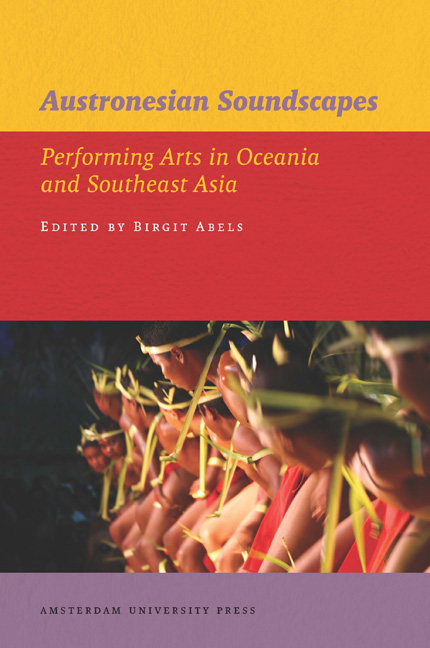15 - Australian Indigenous Choices of Repertoire in Community CDs/DVDs: Recording and Reclaiming Torres Strait Islander Sacred and Secular Music
Published online by Cambridge University Press: 20 January 2021
Summary
Introduction
The Torres Strait region of far northeastern Australia is not only a major Austronesian maritime passageway that links the Pacific and Indian Oceans, it is also a cultural crossroads. Beginning in the mid-19th century, a multicultural workforce employed in the maritime industries (Mullins 1995; Ganter 1994) brought with them music and performance cultures from Oceania, Southeast Asia, the Americas and Europe (Neuenfeldt 2004; Mullins 2001; 2005; Costigan 2007). Over the past 125 years, these influences have met, mingled and mutated along with local Indigenous influences into the unique musical culture circulating today (Neuenfeldt 2008), both in the Torres Strait region and on the Australian Mainland where approximately two-thirds of Torres Strait Islanders (henceforth Islanders) now reside. As Lawrence notes: ‘Wherever Islanders live – whether on the home islands or in mainland cities and towns – they express their culture and identity through music and dance performances’ (H. Lawrence 1998a: 52). Music has proved to be one way of maintaining and sustaining a connection to a home island, even if Islanders may have migrated generations ago. Notwithstanding the fact that the majority of Islanders live on the mainland, it is in the cultural crucible of the Torres Strait region that change in Islander culture continues to be negotiated. Music remains a key site for exchange and innovation and for the dialogical construction of a suitable and sustainable Islander identity, a way of asserting, ‘“this is who we are”’ (Nakata 2007: 142), through artistic expression.
There are two significant styles of music performed and composed today in Torres Strait. I use style here in Sherinian's sense of ‘an idiom of recognisable musical elements (or codes), performance procedures, and contextual purpose, use, and meaning’ (Sherinian 2007: 238). I will broadly call these two styles ‘the sacred’ and ‘the secular’. However, as will become clear, in some contexts the two styles overlap. There is also an overlap about what is locally conceptualised as ‘contemporary’ or ‘traditional’ music and the problematic matter of defining them as distinct categories. Apropos of Islander music, Dunbar-Hall and Gibson note in the context of Aboriginal music: ‘The co-existence of stylistic markers [of contemporary and traditional styles] both within artists’ repertoire, and within songs themselves, attests to these definitional problems.’
- Type
- Chapter
- Information
- Austronesian SoundscapesPerforming Arts in Oceania and Southeast Asia, pp. 295 - 318Publisher: Amsterdam University PressPrint publication year: 2012



